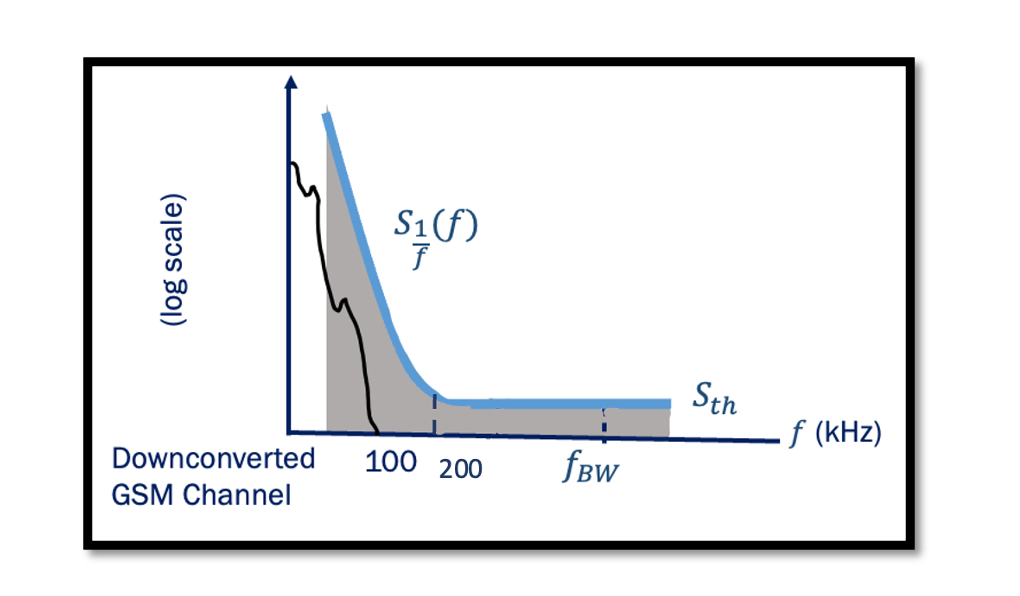
Calculate Flicker Noise Penalty with Example
Which noise is dominant in the baseband?
It is flicker noise, which is dominant in the baseband, if the signal gets translated to the intermediate frequency, we will not have a flicker noise problem. The flicker noise is only dominant in low frequency.
What is Flicker Noise Penalty?
The flicker noise penalty is equal to Pn1/Pn2 where Pn1 is the power of noise when there is flicker noise and Pn2 is the power of noise when there is no flicker noise.
With the decrease in frequency, noise dominates. The increased flicker noise will now become a problem as it will affect our channel. The parameters are:
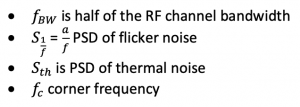

At the corner frequency (fc) the PSD of flicker noise is equal to the PSD of thermal noise. Another assumption would be to ignore the noise effect below fBW/1000 (it’s very low frequency, kind of negligible a DC value).

So we are going to find the total power of the spectrum, we have two regions marked 1 & 2. As we know power is equal to the area under PSD, so the total power for the spectrum can be calculated as:
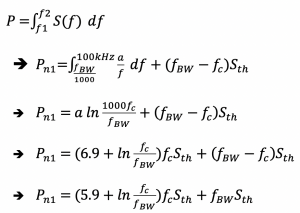
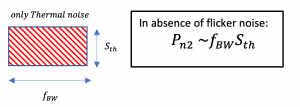

The aim would always be to try and decrease this, if channel bandwidth is high we will have a low flicker noise penalty. Higher bandwidth means flicker will affect only a small part of the channel, so in that case, we will have a better noise penalty:
What is the effect of flicker noise on a GSM channel?
There are different categories of noise that can be specific to devices. Read about types of noise in RF devices. Flicker Noise is present in almost all electronic components. It is inversely proportional to frequency and decreases with an increase in frequency, often occurring as resistance fluctuation.
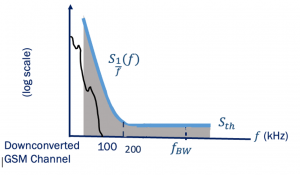
Example to calculate flicker noise penalty:
In a previous blog, we discussed how the flicker noise affects the receiver. Read more about it. In this example above we have shown the GSM channel for which we will find the Flicker Noise Penalty. The GSM channel here is down-converted to the low frequency. The downconverters signal means the zero IF. As we already know that flicker noise is dominant in low frequency and there won’t have flicker noise in intermediate frequency. So we are going to start with the flicker noise penalty. Our channel here GSM channel has a bandwidth of 200 kHz, half of which is 100kHz, and in this example, we are going to find the power up to this.
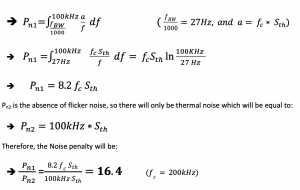
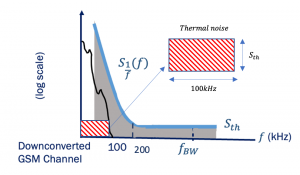

Learn more about this topic by taking the complete course ‘RF System Design of Receivers, Transmitters & Transceivers – RAHRF409’. Watch the course videos for more detailed understanding. Also checkout other courses on RF system and IC design on https://rahsoft.com/courses/. Rahsoft also provides a certificate on Radio Frequency. All the courses offer step by step approach.



